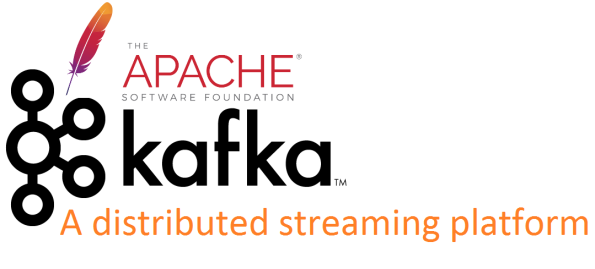Apache Kafka – Introduction & Installation
 Apache Kafka is a distributed streaming platform. What exactly does that mean? Why this Kafka?
Apache Kafka is a distributed streaming platform. What exactly does that mean? Why this Kafka?
Most traditional messaging systems don’t scale up to handle big data in realtime, however. So engineers at LinkedIn built and open-sourced Kafka: a distributed messaging framework that meets the demands of big data by scaling on commodity hardware.
In this post let we will start with how to install and run Apache Kafka in your development environment.
What is Kafka?
Apache Kafka is messaging system built to scale for big data. Similar to Apache ActiveMQ or RabbitMq, Kafka enables applications built on different platforms to communicate via asynchronous message passing. But Kafka differs from these more traditional messaging systems in key ways:
- It’s designed to scale horizontally, by adding more commodity servers.
- It provides much higher throughput for both producer and consumer processes.
- It can be used to support both batch and real-time use cases.
- It doesn’t support JMS, Java’s message-oriented middleware API.
Kafka’s basic terminology:
- A producer is process that can publish a message to a topic.
- a consumer is a process that can subscribe to one or more topics and consume messages published to topics.
- A topic category is the name of the feed to which messages are published.
- Each record consists of a key, a value, and a timestamp.
- A broker is a process running on single machine.
- A cluster is a group of brokers working together.
- Kafka is run as a cluster on one or more servers.
Kafka’s API’s:
- The Producer API allows an application to publish a stream of records to one or more Kafka topics.
- The Consumer API allows an application to subscribe to one or more topics and process the stream of records produced to them.
- The Streams API allows an application to act as a stream processor, consuming an input stream from one or more topics and producing an output stream to one or more output topics, effectively transforming the input streams to output streams.
- The Connector API allows building and running reusable producers or consumers that connect Kafka topics to existing applications or data systems. For example, a connector to a relational database might capture every change to a table.
More details about Apache Kafka: https://kafka.apache.org/intro.
Kafka Architecture:

Kafka Installation:
Before installing Apache Kafka, you need to install Apache Zookeeper. Service required by kafka for maintaining all the required configuration information and for providing distributed synchronization.
Download Apache Zookeeper from: Download Zookeeper
Extract the zookeeper-3.4.10.tar.gz into your local drive eg: C:\apache\zookeeper-3.4.10\
- Once you extracted the zookeeper, locate the conf folder. eg: C:\apache\zookeeper-3.4.10\conf
- Rename the “zoo_sample.cfg” to “zoo.cfg” inside the conf folder
- Create a data directory for zookeeper in your local drive. eg: C:\zk_data
- and update the “dataDir=C:/zk_data” in the “zoo.cfg” file.
Download Apache Kafka from: Download Kafka
Extract the “kafka_2.10-0.10.2.1.tgz” into your local drive eg: C:\apache\kafka-2.10\
- after extract you will find the server.properties file in side the config folder, in my case its: C:\apache\kafka-2.10\config\
Lets now start the zookeeper followed by kafka:
- Start the Zookeeper server by executing the command:
C:\apache\zookeeper-3.4.10\bin>zkServer.cmd

- Start apache Kafka server by executing the command:
C:\apache\kafka-2.10\bin\windows>kafka-server-start.bat C:/apache/kafka-2.10/config/server.properties

- Create a test topic that you can use for testing: “javainsider”
C:\apache\kafka-2.10\bin\windows>kafka-topics.bat –create –zookeeper localhost:2181 –replication-factor 1 –partitions 1 –topic javainsider

- Start a simple console consumer that can consume messages published to a given topic, such as “javainsider”:
C:\apache\kafka-2.10\bin\windows>kafka-console-consumer.bat --bootstrap-server localhost:9092 --topic javainsider --from-beginning

- Start up a simple producer console that can publish messages to the test topic:
C:\apache\kafka-2.10\bin\windows>kafka-console-producer.bat --broker-list localhost:9092 --topic javainsider

- Try typing one or two messages into the producer console. Your messages should show in the consumer console.
Congratulations! You are done with Apache Kafka installation and testing a Kafka instance with an out-of-the-box producer and consumer.
In my next blog post I will explain how to use the Apache Kafka with Java programs. Happy learning 🙂
-
May 18, 2017 at 4:03 AMLast week in Stream Processing & Analytics – 17.5.2017 | Enjoy IT - SOA, Java, Event-Driven Computing and Integration